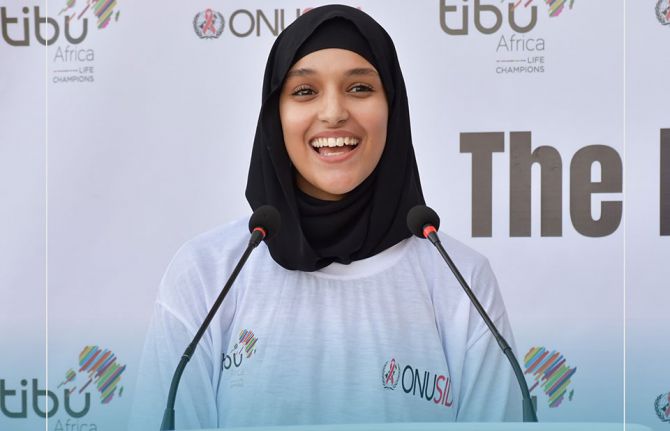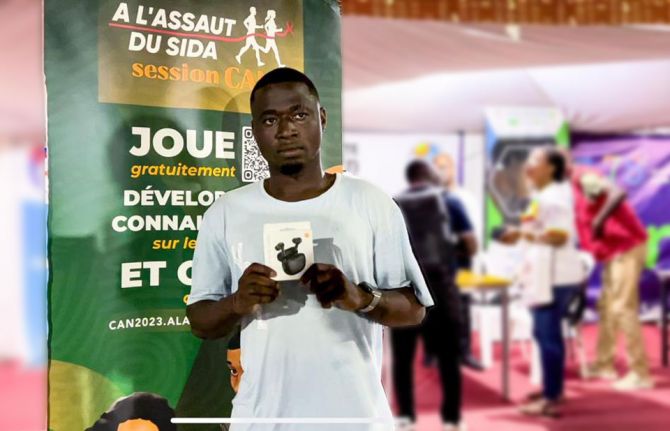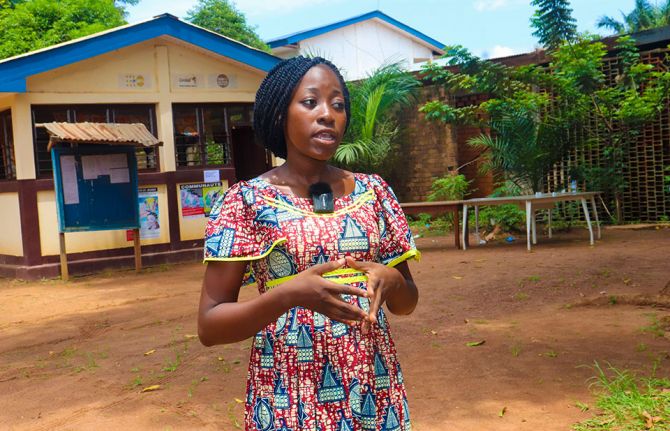
Feature Story
HIV prevention among most-at-risk young people: How to get the message across
28 décembre 2009
28 décembre 2009 28 décembre 2009
photo caption. Credit:
It is critical that young people most-at-risk of HIV infection are better informed and equipped with skills to protect themselves. This was a key argument emerging from an international symposium convened to address the education sector’s response to the challenge of HIV among this key population.
Held in Berlin in early December, the meeting of the UNAIDS Inter-agency Task Team (IATT) on Education was hosted by German Technical Cooperation (GTZ) on behalf of the German Federal Ministry for Economic Cooperation and Development (BMZ). It brought together some 70 experts from around the world to discuss concrete ways forward to reach, with prevention messages, the most vulnerable young people already engaging in high-risk behaviour, such as multiple partnerships, inter-generational sex, unprotected male-to-male sex, sex work or injecting drug use.
Young people in general are especially vulnerable to the virus. According to the UNAIDS 2009 AIDS Epidemic Update, those aged 15-24 account for 40% of all new infections. This is exacerbated by the fact that only 40% of young people in the same age group have accurate knowledge about HIV and transmission. Helping youth avoid infection is seen as crucial for social and economic development, and providing them with AIDS-related knowledge and skills is a central concern of the UNAIDS IATT on Education.
Reaching those who have never been to school or who have dropped out early and left the formal education sector represents a particular challenge and the symposium examined a range of possible approaches to reach vulnerable adolescents and youth both in and out of school, looking at specifically targeted responses.
Ishita Chaudhry from the YP Foundation in India noted that while sexuality was a fundamental component of being human there was a failure to get basic information to young people to help protect them from HIV infection. “Why is sexuality so problematic?” she asked.
According to Dr Robert Carr, the Associate Director of the International Council of AIDS Service Organizations (ICASO) and keynote speaker, young people are too often “left to fend for themselves”, receiving inadequate preparation for their sexual and reproductive lives.
Fear, stigma and discrimination, laws and policies were identified as barriers to meeting the needs of those most vulnerable and ensuring their involvement in developing and implementing interventions. According to Els Klinkert, Senior Policy Adviser at UNAIDS, the “most-at-risk young people in low and concentrated epidemics are largely invisible”. This notion of invisibility was also invoked by Dr. Carr referring to gay and bisexual youth in the Caribbean. “Hidden behaviours” and limited frank discussions about these behaviours were seen to be problematic.
Symposium participants were able to review existing data on education sector approaches to HIV prevention; exchange ideas and experiences; and develop recommendations for outreach strategies that target young people in inclusive and gender-sensitive ways.
The sector was seen to play a role in multiple aspects of the response for most-at-risk young people. It was noted, firstly, that schools often extend farther into many communities than most public services – and have the potential to reach children and young people before they engage in most-at-risk behaviours. Secondly, good quality education that focuses on empowerment within safe and protective environments has a sustained impact on reducing vulnerability and behaviours that create, increase or perpetuate risk. Thirdly, comprehensive sexuality education – which addresses sexual and reproductive health, human rights, HIV prevention, gender, drugs and other aspects – was seen to equip learners with the necessary knowledge and skills to make informed decisions.
There was a shared understanding that young people should be at the heart of HIV programming, not just as passive recipients of information and services but as involved actors and that this is critical when developing and implementing HIV interventions. The statement issued by youth representatives at the meeting reinforced this point: “We demand the meaningful involvement of diverse youth communities, especially young people living with HIV as they are the key role models and leaders in the movement…We young people are here living, working, and ready to take responsibility along with your support and mentorship. We are not future leaders, we are leaders of today.”
Empowering young people to protect themselves from HIV is one of the nine priority focus areas for UNAIDS and its Cosponsors under the Joint action for results: UNAIDS outcome framework 2009-2011.
Formed in 2002, the IATT on Education is convened by UNESCO and brings together UNAIDS Cosponsors, bilateral agencies, private donors and civil society partners with the purpose of accelerating and improving a coordinated and harmonised education sector response to HIV.
HIV prevention among most-at-risk young people: H
Cosponsors:
Feature stories:
Education sector: Getting to grips with an HIV monitoring and evaluation framework (23 November 2009)
More needs to be done to help young people most at risk of HIV infection (10 August 2009)
UNAIDS Task Team develops effective tools to help young people tackle HIV (05 June 2009)
Publications:
A Strategic Approach: HIV & AIDS and Education UNAIDS IATT on Education, 2008 (pdf, 2.44 Mb.)
Toolkit for Mainstreaming HIV and AIDS in the Education Sector: Guidelines for Development Cooperation Agencies. (UNAIDS IATT on Education, 2008) (pdf, 1.01Mb.)
UNAIDS Outcome Framework 2009-11 (pdf, 396 Kb.)



